Interested in learning what the top 10 most addicting drugs are? You’re not alone. According to some statistics, up to two-thirds of all American families have been impacted in some way by the disease of addiction. It’s not hyperbole to say that everyone knows someone who has battled a substance abuse problem. It is an illness that touches us all. In generations past, addiction was largely looked upon as a moral failing or weakness on the part of the addict. The person abusing drugs or alcohol was admonished to show greater willpower in order to overcome their supposed weakness. Thankfully, medical science has moved beyond that of erroneous school of thought and predominantly accepted the idea of addiction as a disease, specifically a disease of the brain that is primarily caused by genetics and influenced by environment and behavior. “Here I would reaffirm what I have stated on another occasion: No to every type of drug use. It is as simple as that. No to any kind of drug use. But to say this ‘no’, one has to say ‘yes’ to life, ‘yes’ to love, ‘yes’ to others, ‘yes’ to education, ‘yes’ to greater job opportunities. If we say ‘yes’ to all these things, there will be no room for illicit drugs, for alcohol abuse, for other forms of addiction.” ~Pope Francis, in an audience with the 31st International Drug Enforcement Conference, in June of 2014
“We offer inpatient and outpatient drug rehab and accept many health insurance plans. Take a look at our 28-day program.”
What is Addiction?
An addiction occurs when someone uses a substance, even if they don’t want to. No matter how hard they try, they can’t stop using it. The urge to use is just too hard to control. When people begin using drugs or alcohol, they don’t intend to become addicted to them. Most people think that they’ll just use for a short period of time, and then stop. Unfortunately, it doesn’t always work out that way. Even when people think that they are in control of their substance abuse, the opposite is usually true. People end up using just to feel normal, or more like themselves. This is a classic sign of addiction. Of course, there are many others.
Signs of Addiction
Unfortunately, many people are unaware of what the signs of addiction really are. This only adds to the problem of substance abuse in the United States. Once you’re able to recognize addiction for what it is, you can take the necessary steps to stop. Some common signs of addiction include:
- Not being able to stop using, even if you desire to
- Going through withdrawal when you do stop using
- Continuing to use even if you’re experiencing health problems
- Giving up people and activities you love in favor of using
- Working hard to make sure you always have a supply of your chosen substance on hand
- Taking dangerous risks when you use
- Using substances as a way to cope with your problems
- Becoming obsessed about using drugs or alcohol
- Being secretive about your substance use
- Denying that you have an addiction
Do you notice any of these classic addiction signs within yourself? If you do, you probably have an addiction.
What Makes a Substance Addictive?
As you look at the top ten most addictive drugs, you may wonder what makes them addictive? What is it that makes addicting drugs different from other types of drugs? It has to do with your brain’s reward system. There are certain types of substances that actually activate your brain’s reward system. This triggers the release of excess dopamine into your system. As this dopamine is released, you have a pleasurable experience. Once you experience that dopamine release, you eventually start to crave it again and again. There are even some people who are genetically predisposed to these cravings for alcohol or drugs.
What Are the Top 10 Most Addicting Drugs?
With the flood of so-called “designer drugs” flowing into the United States, there are always new substances and drug strains being introduced to the illicit marketplace. Right now, those drugs of abuse occupy only a very small niche percentage of what is currently used, but that figure is expected to grow.
Here is a list of commonly-abused substances that are considered by experts to be the top 10 most addicting drugs, ranked from First to Tenth:
#1 Heroin and Opioids
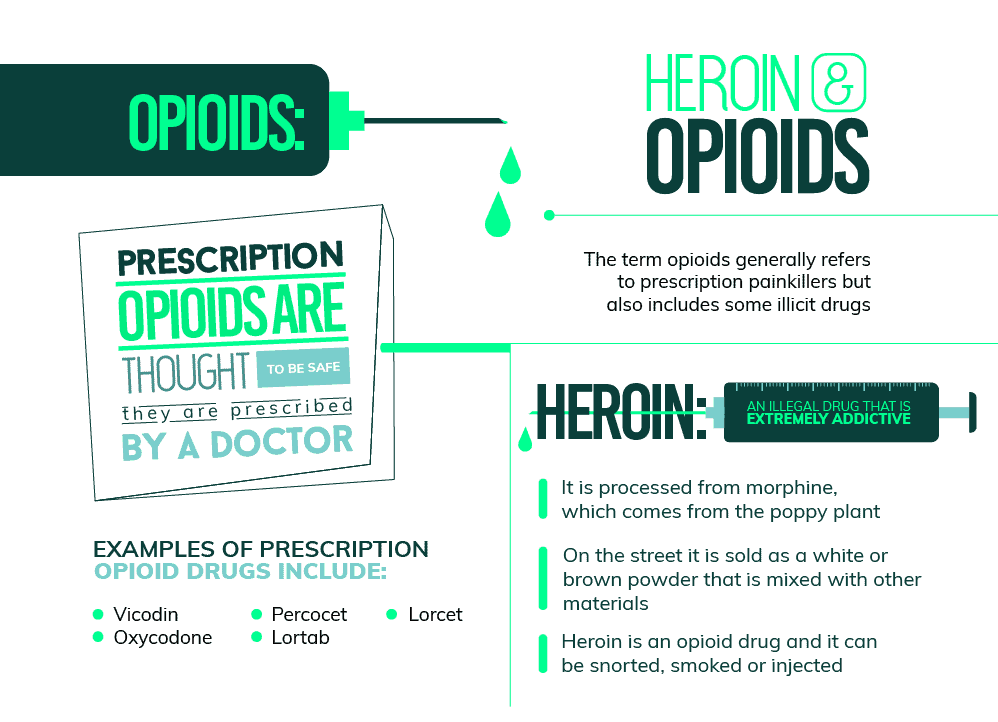
What are Heroin and Opioids?
Heroin and opioid drugs are closely related to each other. However, one is legal, and the other is illegal. Let’s take a closer look at them separately. Heroin Heroin is an illegal drug that is extremely addictive. It is processed from morphine, which comes from the poppy plant. On the street, heroin is sold as a white or brown powder that is mixed with other materials. Sugar, starch and powdered milk are all used to “cut” with heroin. Heroin can be snorted, smoked or injected. There is also a substance called Black Tar Heroin, which is sticky or hard. Opioids The word opioids generally refers to prescription painkillers. However, heroin is also an opioid drug. Prescription opioids are thought to be safe because they are prescribed by a doctor. However, they are anything but safe when they are abused. Opioid drugs work by binding to the opioid receptors in the brain and body. They dull your sensations of pain, which is why they are useful medically. However, taking too much of an opioid drug can result in a high that becomes addictive. Some examples of opioid drugs include:
- Vicodin
- Oxycodone
- Percocet
- Lortab
- Lorcet
Heroin Addiction
Quite often, a heroin addiction will take place once a prescription opioid addiction is already present. Many people start by using prescription opiate drugs. Once they are no longer able to get them, they switch to heroin because they’re related. Someone who has become addicted to heroin will exhibit some common signs of addiction. These include:
- Lying about his or her heroin use
- Avoiding eye contact during conversations
- Spending a lot of time sleeping
- Incoherent or slurred speech
- Losing motivation about future goals
Opioids Addiction
An addiction to opioid drugs can happen very quickly. It can even happen by accident because people don’t realize how addictive these drugs are. People may even mistake the signs of opioid addiction for just side effects of their medications. Some common signs of opiate addiction include:
- Constipation and digestive issues
- A slow breathing rate
- Frequent drowsiness
- Problems with coordination
- Frequent mood swings
Are Heroin and Opioids Addictive?
According to the National Institute on Drug Addiction, almost one out of every four people who ever tried heroin become addicts. What’s worse, heroin use in the United States is skyrocketing, according to a report released in June of 2015 by the Centers for Disease Control. According to the report, heroin use has increased by 150% in just the past six years, and in 2013, more than half a million Americans admitted to using heroin. Part of the reason for the spike and heroin usage is attributable to the explosion of prescription opioid painkiller abuse. Tom Frieden, the CDC’s director, says, “People who abuse or who are dependent on prescription painkillers were 40 times more likely to abuse heroin.” Heroin is up to four times as potent as morphine and is nearly-universally regarded as the hardest drug from which to detox. Although not particularly dangerous, the withdrawal symptoms can be severely unpleasant, including chills, painful bone and muscle aches and cramps, vomiting, and diarrhea. The involuntary muscle spasms associated with heroin withdrawal are believed to be the origin of the term “kicking the habit”. Heroin is so addictive that the majority of people who quit must use a “maintenance program” that substitutes methadone – itself one of the most addictive drugs on the planet. There are many very addictive prescription opiates/opioids similar in make up to heroin that should also be included in our #1 spot. Medications like: Morphine, Oxy, Hydrocodone and many more.
#2 Crack Cocaine
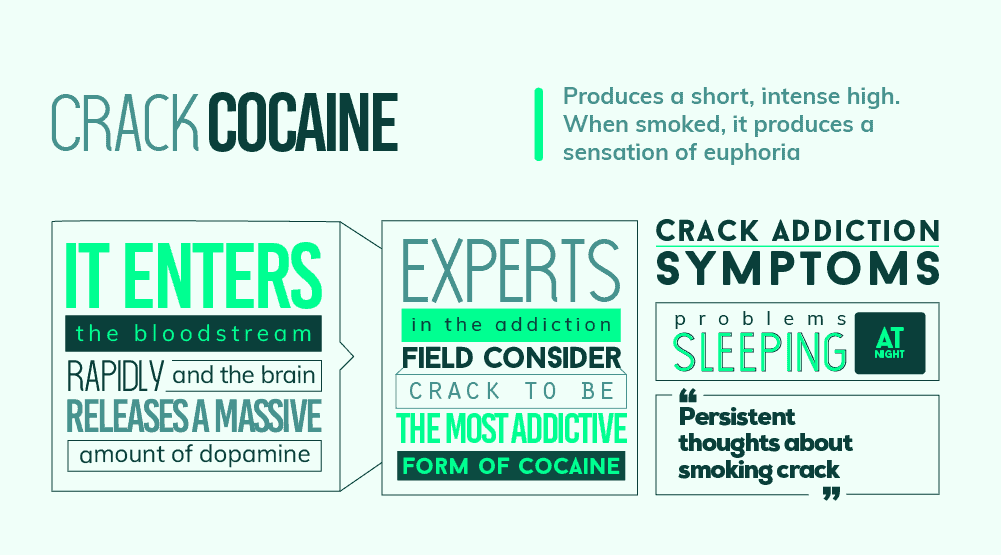
What is Crack Cocaine?
Crack cocaine is a form of cocaine that is able to be smoked. It produces a short, intense high to those who use it. Experts in the addiction field refer to crack as being the most addictive form of cocaine. Crack cocaine is a recreational drug. When crack is in pure form, it comes in off-white pieces with jagged edges. When crack is sold on the street, it is “cut” with other substances to increase its bulk.
Crack Cocaine Addiction
Once someone starts using crack cocaine, it can create a powerful addiction. This occurs because of the way the drug stimulants pleasure centers in the brain. When smoked, crack produces a sensation of euphoria. It enters the blood stream quickly, and a tolerance to the drug can form fast. Someone who is addicted to crack will demonstrate the following symptoms of addiction:
- Problems sleeping at night
- An increased heart rate
- A higher blood pressure than normal
- Persistent thoughts about smoking crack
- Using crack at the expense of everything else in their lives
Is Crack Cocaine Addictive?
Also known as “rock”, crack is the most addictive form of cocaine. Many abusers report that their addiction started from their first usage, as they tried to recapture the intense euphoric rush of the first time they tried crack. Crack cocaine is so addictive because it enters the bloodstream rapidly and the brain releases a massive amount of dopamine. However that “high” is extremely short-lived, lasting only 5-10 minutes. Immediately after the drug wears off, the person experiences anxiety, intense depression, and an overwhelming craving for more of the drug. Although the “heyday” of crack was in the mid-1980’s it has been reported that almost 4% of American citizens aged 12 or older will try sometime within their lifetime.
#3 Nicotine
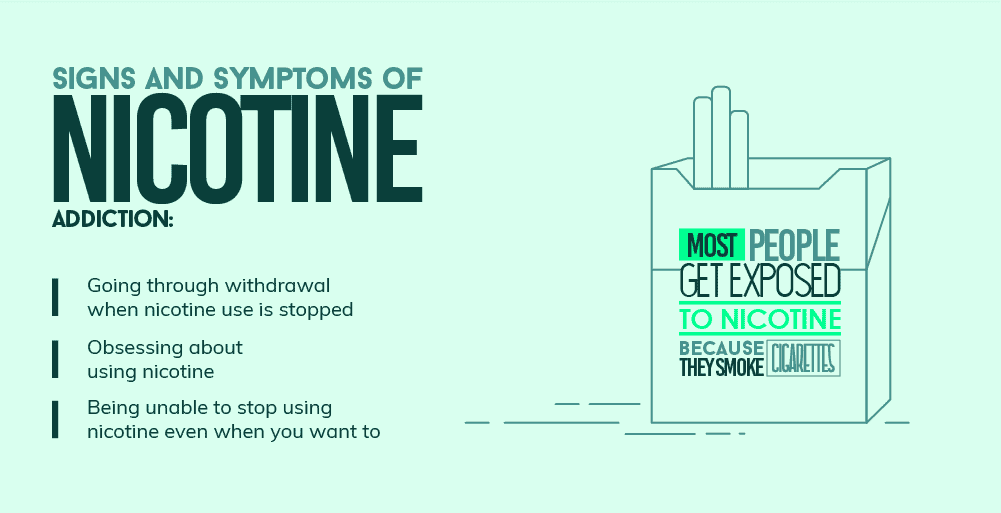
What is Nicotine?
Nicotine is a chemical that contains nitrogen. It is made by many types of plants, including the tobacco plant. Other plants that contain nicotine include red peppers, tomatoes and potatoes. Nicotine has certainly earned its place on the list of the top 10 most addictive drugs. Some even say that it is at least as addictive as heroin. People can use nicotine in a number of ways, including smoking it, snorting it and chewing it.
Nicotine Addiction
Nicotine is a highly addictive drug. Most people get exposed to nicotine because they smoke cigarettes. People will continue to smoke in spite of any negative health issues they may have. Most tobacco smokers and users know how harmful nicotine is. Yet, they feel powerless to stop using it. Some signs and symptoms of nicotine addiction include:
- Going through withdrawal when nicotine use is stopped
- Obsessing about using nicotine
- Experiencing cravings for nicotine
- Being unable to stop using nicotine even when you want to
- Continuing to smoke in spite of health problems
Is Nicotine Addictive?
Addiction to nicotine is the #2 cause of death around the world. More than 480,000 US citizens die every year because of smoking cigarettes, including almost 50,000 people who have died because they were exposed to secondhand smoke. This number accounts for approximately 20% of US deaths. In addition to the fatalities, another 16 MILLION people currently suffer with a major illness that was caused by smoking cigarettes. Seconds after inhaling cigarette smoke, nicotine enters the bloodstream and begins affecting the smoker’s brain. Because nicotine is both a depressant and a stimulant, it can relax a user at the same time that it gives them a boost of energy. Smoking is addictive for several reasons – the physical and psychological effects of nicotine, the power of habit (some smokers repeat the “smoking ritual” more than 50 times a day), and the societal factors – there are many everyday situations where it is “normal” to smoke. Because nicotine is so physically addictive, many people who earnestly desire to stop smoking find that they simply cannot function without nicotine, and must gradually taper off with nicotine replacement therapy in the form of patches, inhalers, lozenges, sprays, or gums.
#4 Methadone
What is Methadone?
Methadone is a drug that is often used to treat opiate addiction. It can help to reduce cravings and withdrawal symptoms in those who abuse opiates. Methadone is often favored in drug treatment because it can reduce the chance of relapse.
Methadone Addiction
It is unfortunate, but the truth is that methadone can also become addictive. It is also an opiate drug, and when it is abused, addiction can sometimes result. Methadone abuse usually means taking more methadone than what is prescribed. This happens far too often, and it’s why many believe medications in drug treatment aren’t beneficial.
Is Methadone Addictive?
Methadone is the primary medication used as a substitute for heroin and other opiates. It reduces the symptoms of withdrawal without causing the euphoric high associated with the other drugs. Even though a medically-supervise methadone addiction is considered to be preferable to an unregulated, spiraling heroin addiction, its use as a medication is not without danger. Between 1999 and 2011, drug overdose deaths due to methadone poisoning jumped from 784 to 4418. Withdrawal symptoms from methadone are very comparable to that of other opiates, with two important distinctions – the withdrawal period is much longer, but it is also much less intense.
#5 Methamphetamine
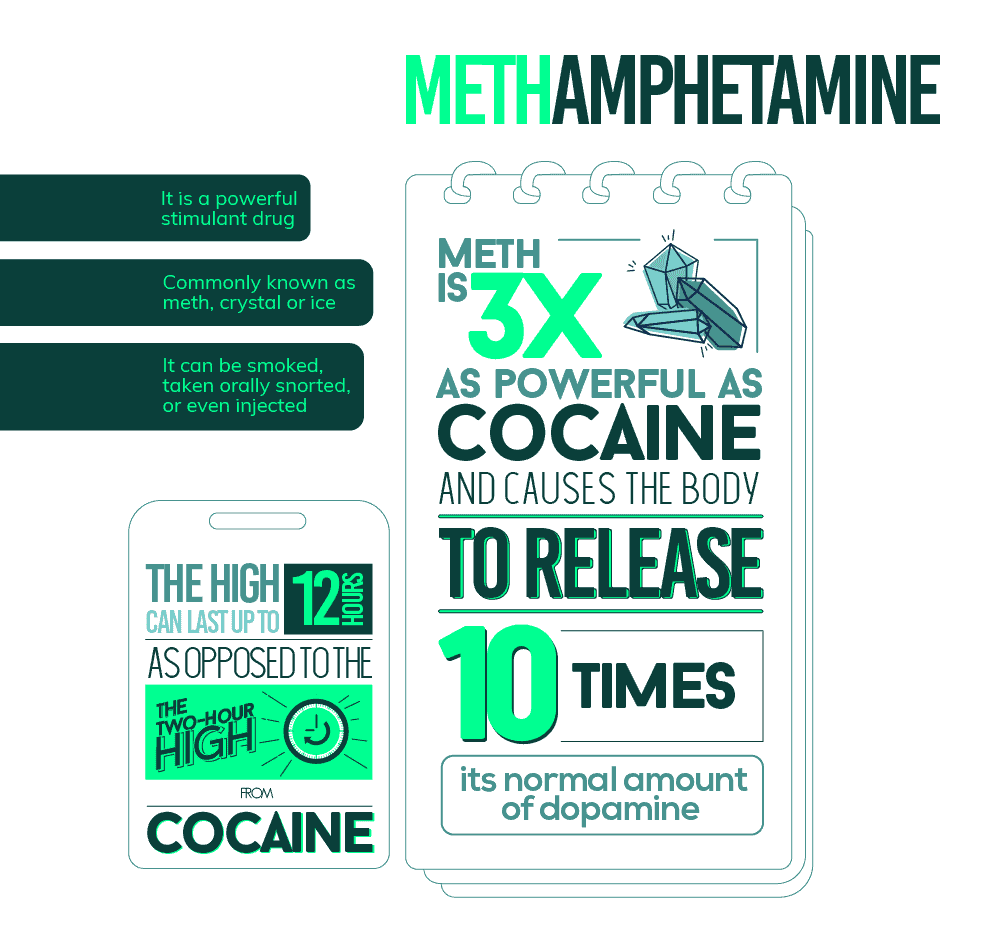
What is Methamphetamine?
Commonly known as meth or crystal, methamphetamine is an extremely potent and addictive stimulant that comes in the form of a white crystalline powder. It can be smoked, taken orally snorted, or even injected. Methamphetamine was originally made in the early 20th century. It was used to treat nasal congestion and as a breathing treatment. It is a powerful stimulant drug that many abuse in the United States.
Methamphetamine Addiction
It doesn’t take long to form a methamphetamine addiction once you start using this drug. It makes sense that it would be a part of the 10 most addictive drugs. Some experts even believe that addictions can form after the first use of meth. Someone who is addicted to crystal meth may exhibit many of the following signs of addiction:
- Increased attention
- A decrease in fatigue
- A decrease in appetite
- Increased breathing rate
- An irregular heart rate
Is Methamphetamine Addictive?
Methamphetamine is three times as powerful as cocaine and causes the body to release 10 times its normal amount of dopamine. The high from a use can last up to 12 hours, as opposed to the two-hour high from cocaine. The first few times a person uses methamphetamine, the decision is made in the prefrontal cortex of the brain – it is a conscious choice. However, possibly as soon as only the third use, the hindbrain takes charge – it becomes an involuntary function. Jim Peck, a researcher at UCLA’s Semel Institute for Neuroscience and Human Behavior, says, “Meth actually changes your brain. Your brain elevates your need for the drug the same level as anything else you have to do to survive, like breathing.”
#6 Alcohol
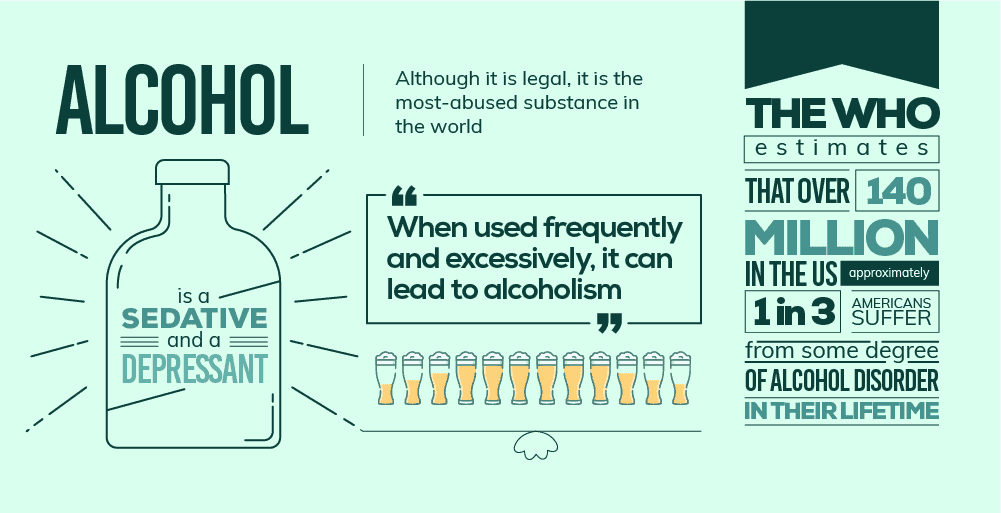
What is Alcohol?
Alcohol is a legal substance that is prevalent all across the United States. It is a sedative and a depressant that does not contain any nutritional value at all. One of the problems with alcohol is that it is socially acceptable. It is also easily accessed, which leads people to believe that using it is safe. When alcohol is used frequently and excessively, it can lead to alcoholism.
Alcohol Addiction
An alcohol addiction or alcoholism is something that can affect anyone. People tend to think of it as something that only affects homeless individuals, or the poor. The fact is that people from all walks of life can succumb to alcoholism. There is no one, single cause of alcoholism. It can be genetic, but other factors play into it as well. The symptoms of alcohol addiction include:
- Increasing how much or how often you use alcohol
- Not having any hangover symptoms after a night of heavy drinking
- Drinking at inappropriate places or times
- Having a strong desire to be where alcohol is being served all the time
- Avoiding loved ones and friends because of feeling ashamed
Is Alcohol Addictive?
Alcohol is the most-abused substance in the world. Across the planet, the World Health Organization estimates that there are over 140 million In the United States, approximately 1 in 3 Americans suffer from some degree of alcohol disorder in their lifetime. Not everyone who drinks becomes an alcoholic, but some people who have a genetic disposition to alcoholism may have brains that respond differently to drinking. Individuals whose brains naturally release more endorphins experience more pleasure when they drink than other people. This means that they are much more likely to drink to excess and potentially become alcoholics. Jennifer Mitchell, Ph.D., from the University of California, San Francisco, says, “Greater endorphin release was associated with more hazardous drinking. We believe this is an important step in understanding where and how alcohol acts in the brain.” The abrupt cessation of alcohol can be potentially hazardous, even life-threatening. For this reason, alcohol detoxification should only be done in the presence of qualified medical staff and possibly with the assistance of certain prescription medications.
#7 Cocaine
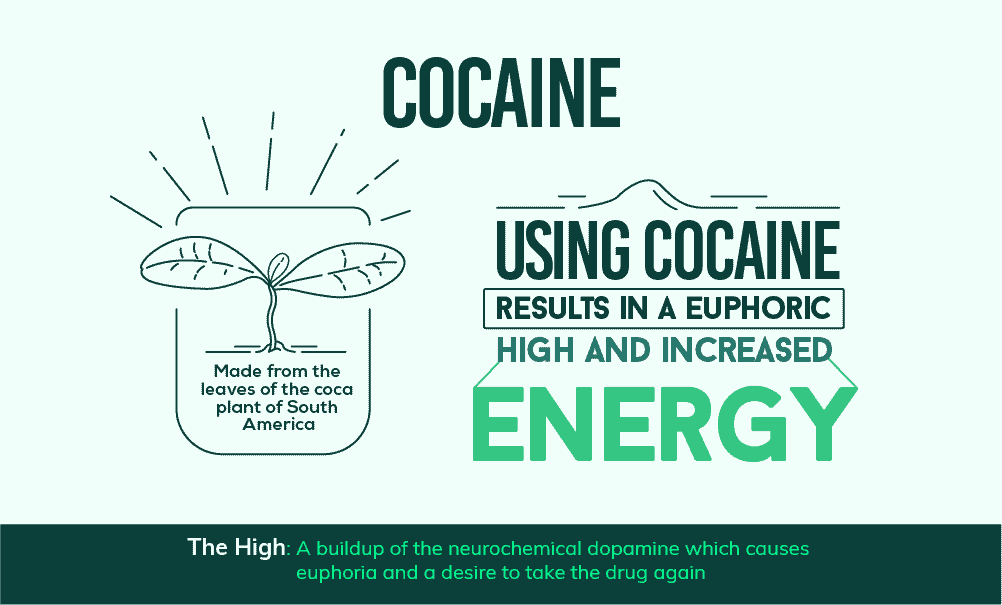
What is Cocaine?
Cocaine is made from the leaves of the coca plant of South America. It is a powerful, addictive stimulant drug. It looks like a fine, white powder. Dealers will frequently mix other materials with cocaine, such as starch or sugar. This helps them increase their profits. Cocaine can also be mixed with amphetamines.
Cocaine Addiction
Cocaine addiction is often referred to as cocaine dependence. This refers to the act of having a strong desire to use cocaine regularly. The addiction itself can be both physical and psychological. Using cocaine results in a euphoric high and increased energy. Some experts believe that an addiction to cocaine can be developed after just one use.
Is Cocaine Addictive?
According to the national survey on drug use and health, almost 1 in every 5 Americans over the age of 26 will use cocaine sometime in their life. Also known as coke or snow, powdered cocaine is a powerful stimulant made from the leaves of the coca plant. Cocaine causes a massive release of dopamine, but the effects are extremely short-lived. When snorted, a cocaine high will last approximately 15 to 30 minutes, but when it is injected or smoked, the high can last as short as 5 minutes. The combination of the intensity of the rush and the rapidity of its loss are what drive the craving for more of the drug. Over time, cocaine abuse can create long-term changes in the reward system of the brain. The addict will need more and more of the drug to achieve the same effect. Increased dosages only serve to further worsen the addiction.
#8 Amphetamine
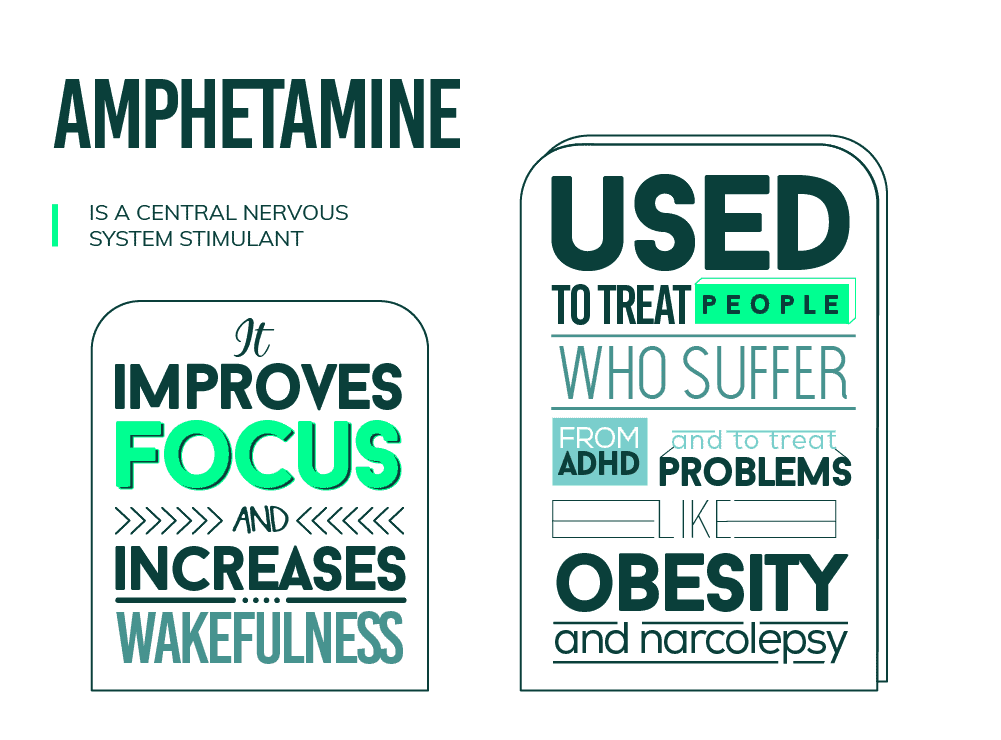
What is Amphetamine?
Amphetamine is a central nervous system stimulant. It is used to treat people who suffer from ADHD, or attention deficit hyperactivity disorder. It is also used to treat problems like obesity and narcolepsy. When amphetamine is used therapeutically, it can be very helpful to those who need it. It improves focus and increases wakefulness. However, this drug is also easily abused. This is why it has earned its spot on the top ten most addictive drugs list.
Amphetamine Addiction
Amphetamine addiction can happen when people use these drugs too much. Sometimes when people start taking amphetamines, they will increase their dosages on their own. This is usually because they no longer feel the effects of the drugs. On the other hand, there are also those who use amphetamines without a prescription. They may use them because they want the effects of the drugs. They could also use them to get high. Either way is dangerous, and is likely to lead to an addiction.
Is Amphetamine Addictive?
Like its chemically-related cousin, methamphetamine, this is an extremely powerful and addictive stimulant. Used medicinally in such medications as Adderall, it can treat disorders such as ADHD. Users will also notice increased concentration, weight loss, and more energy. It can be easy to become psychologically dependent on those benefits. As happens with the other drugs on this list, however, amphetamine users will develop a tolerance to the increased amounts of dopamine and norepinephrine produced by the brain. They have become physically addicted, but they will need greater dosages to experience the same effect. Withdrawal symptoms from amphetamines are similar to those of cocaine, but considerably longer – mood swings can last up to a year.
#9 Benzodiazepines
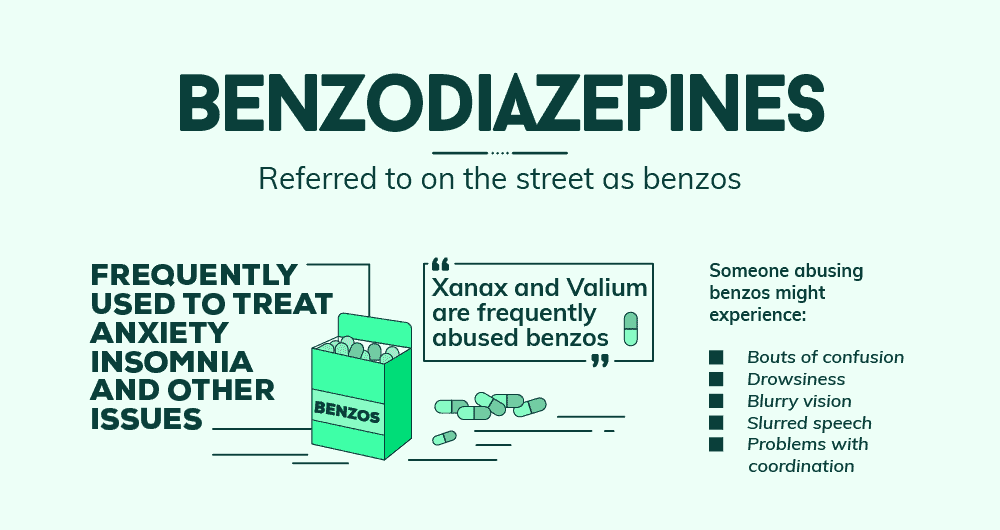
What are Benzodiazepines?
Benzodiazepines are often referred to on the street as benzos. These are psychoactive drugs that are commonly prescribed in the United States. Some people refer to them as tranquilizers. They produce a sedative effect when they are used. Benzodiazepines are frequently used to treat anxiety, insomnia and other issues. Someone using benzodiazepines should be monitored very closely.
Benzodiazepines Addiction
Benzodiazepines can lead to an addiction if they are used for a long period of time. Drugs like Xanax and Valium are frequently abused. When they are abused long enough, an addiction is generally the result. Someone who is abusing benzos might experience:
- Bouts of confusion
- Drowsiness
- Blurry vision
- Slurred speech
- Problems with coordination
Once the benzodiazepine addiction sets in, anxiety and headaches are additional common symptoms.
Are Benzodiazepines Addictive?
“Benzos” have several medical uses, and are very commonly used to treat anxiety, insomnia, seizures, and even alcohol withdrawal. Common brand names include Librium, Valium, Xanax, and Klonopin. A problem arises, however, because benzodiazepines are themselves extremely addictive and dangerous when discontinued abruptly. Severe withdrawal symptoms include psychosis, panic attacks, terrifying hallucinations, uncontrollable tremors, and seizures that are potentially fatal. As with alcohol, withdrawal from benzodiazepines should only be done under the supervision of qualified medical professionals.
#10 GHB
What is GHB?
GHB is often referred to as liquid ecstasy. It is a stimulant drug that is known for its euphoric qualities. It is often used for its aphrodisiac qualities, which has earned it the title of “date rape drug.” Usually, GHB is given along with alcohol. This helps it work much faster.
GHB Addiction
People tend to use GHB because they assume that it’s non-addictive. This simply isn’t true. It is possible to become addicted to GHB, and many people do. GHB addiction happens when people use this drug too much and too often. They may use it in increasing dosages to get the same effects they previously experienced. When stopping GHB, the withdrawal symptoms can be rather frightening.
Is GHB Addictive?
Gamma hydroxybutyric acid belongs to a category of so-called “club drugs”, a class of intoxicants primary use in party settings such as raves or nightclubs. Because it is a stimulant that can act as an aphrodisiac, GHB is classified as a date rape drug. Consuming GHB and alcohol together can be a lethal combination. Street names include Georgia Homeboy, Liquid X, Liquid G, Fantasy, and others. Trinka Porrata, Director of the Project GHB Helpline and a 25-year veteran of the Los Angeles Police Department, says, “GHB is the most dangerous drug because of misinformation about it on websites and because people can die so easily from it… Once hooked, GHB addicts take the drug around the clock, every 2 to 3 hours, to avoid the unpleasant and rapid onset of withdrawal… GHB is the hardest drug to detoxify. It takes 10 to 14 days to detox and the individual can’t do it alone.”
What are the Causes of Drug Addiction?
Although each person’s illness is unique unto them, each of the above factors plays a role in whether and not a person develops the disease of addiction and how that disease manifests and progresses in their life.
Genetics
Environment
Exposure matters, and is nearly as strong an influence as genetics. In a study of twins conducted by the Virginia Institute for Psychiatric and Behavioral Genetics at Virginia Commonwealth University, it was determined that young adolescents’ use of such drugs as alcohol, marijuana, and nicotine is influenced more by social and familial factors than genetics, which don’t reach maximum influence until young and middle adulthood.
Behavior
When a person is genetically and environmentally predisposed toward addiction, they must be especially wary of actually experimenting with or even using any drug, whether it is for its intended purpose or recreationally. Drug use can actually affect changes in the brain’s reward centers, to the point where the user can’t feel “normal” without ever-increasing amounts of the drug, and drug abuse exacerbates the problem.
How Bad Can Addiction REALLY Be?
Although all drugs of abuse affect an individual’s brain, some drugs are much more addictive than others, and this leads to a problematic sequence of events:
- the changes within the addict’s brain are much more profound
- cravings for the drug are more severe
- drug-seeking behavior is more desperate, sometimes to the point of totally sublimating the individual’s “normal” personality
- the physical toll and damage on the person’s body can be hazardous
- withdrawal symptoms can be highly unpleasant or even dangerous, sometimes even potentially life-threatening
- physician-monitored and medication-assisted drug detoxification may be necessary to and physical dependence
- the length of a drug detoxification can increase dramatically
- drug rehabilitation or recovery time can also be significantly extended
In Closing
No matter what the top 10 most addicting drugs are, drug detoxification, withdrawal, and drug rehab are all difficult processes that can be overwhelming for fragile individuals new to recovery. Addiction to any of the drugs listed above magnifies those difficulties. For the sake of a proper start to drug rehab, it is strongly recommended that professional intervention and assistance is used. If you or a loved one are experiencing problems with substance abuse, the best thing you can do for yourself, your future, and your family is to contact a drug rehab program today and ask for help. Are you addicted to one of the top 10 most addictive drugs on this list? If you are, there’s no need to worry because you can get help to stop using. Right now, doing so might seem impossible to you. However, so many people have found that it is possible to recover from addiction. You may need to consider an inpatient drug rehab facility to help you meet your recovery goals. At Northpoint Recovery, we can assist you with finding the right treatment for you. Do you have questions about any of the 10 most addictive drugs? Please contact us to get the information you need.
What Did you Think About This Blog?
Give it a Rating!
